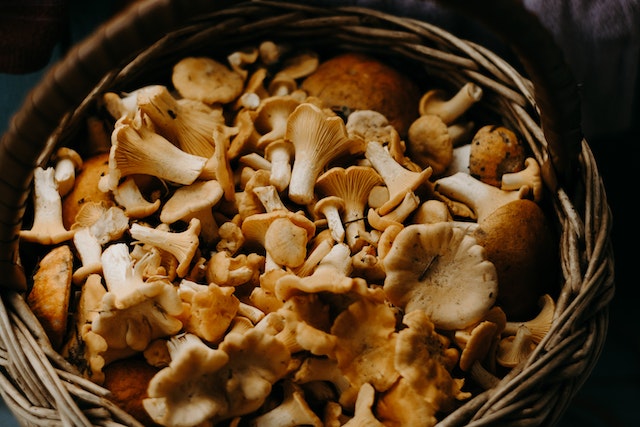Growing mushrooms can be a fun and rewarding experience, whether you’re looking to grow them for culinary purposes or just for the sheer satisfaction of it. However, many people find the process daunting and don’t even know where to start.
That’s why we’ve put together this comprehensive step-by-step guide on how to grow mushrooms that covers everything from the different types of mushroom growing methods available, what materials you’ll need, and best practices for ensuring your mushrooms thrive in their environment. Read on for all the tips and tricks you need to get started harvesting delicious fresh mushrooms right at home!
Procuring Supplies – What You Need To Get Started
First and foremost, you will need a substrate – the material that acts as a growing medium for the mushrooms. Popular substrates include straw, sawdust, and coffee grounds. You will also need a spawn – the mycelium that will eventually grow into the edible mushroom. Once you have your substrate and spawn, you will need to sterilize your supplies to ensure cleanliness and prevent contamination. This step can be achieved through a pressure cooker or pasteurization.
Additionally, you will need a growing container with proper ventilation and humidity control. With these supplies in hand, you are well on your way to growing your own delicious and nutritious mushrooms.
Preparing the Substrate – Creating the Perfect Environment for the Mushrooms to Flourish
Creating the perfect environment for mushrooms to flourish starts with preparing the substrate. And while it may sound like a daunting task, taking the time to get your substrate just right is essential for success. There are a variety of mushroom substrate recipes to choose from, but they all serve the same purpose: to provide the fungi with the nutrients they need to grow and produce fruit.
Once you have chosen your substrate recipe, it’s time to prepare it using sterile procedures to prevent contamination. The key to success with this process is paying close attention to detail and being patient. However, on websites like monstermushrooms.com, and other similar ones, you can get substrates so you can skip this step. That way, you can jump straight into inoculating and harvesting.
Sterilizing The Substrate – Protecting Your Mushrooms from Contamination
As any experienced mushroom grower knows, one of the most important steps in cultivating healthy and bountiful mushrooms is ensuring that your substrate is free of contaminants. This can be a daunting task, especially for those new to the process, but sterilization is absolutely crucial for the success of your crop. Luckily, there are a variety of methods for sterilizing your substrate, from pressure cookers to microwaves to chemical agents.
Regardless of which method you choose, it’s important to be vigilant and meticulous when sterilizing your substrate in order to maximize your chances of a successful harvest. Because, let’s face it, nobody wants a crop of moldy, unusable mushrooms.
Seeding The Substrate – Inserting Mushroom Spores Into The Substrate
This step involves inserting mushroom spores into whatever material is going to be used as the substrate. This can be anything from sawdust to straw to coffee grounds, depending on the type of mushroom being grown. The spores need to be evenly distributed throughout the substrate to ensure a healthy and productive crop.
This can be done in a variety of ways, including shaking the substrate in a bag or mixing it in a large container. Once the spores are seeded, they will begin to grow and develop into mushrooms over the course of several weeks. It’s an exciting process and one that requires patience and attention to detail.
Incubating The Substrate – Encouraging Your Mushrooms to Grow
One crucial step in mushroom cultivation is incubating the substrate, or providing the ideal environment for your spawn to take root and grow. This involves controlling factors such as temperature, humidity, and light to encourage healthy mycelium growth.
Whether you’re using a pre-made kit or cultivating your substrate from scratch, proper incubation is key to producing healthy and abundant crops. With the right techniques and a little TLC, you’ll soon be enjoying the fruits of your labor in the form of delicious, homegrown mushrooms.
Casing The Substrate – Giving Your Mushrooms a Boost in Growth
As every mushroom grower knows, the key to a successful harvest is in the substrate. The substrate, or the growing medium, serves as the foundation for the mushrooms to grow and flourish. But did you know that casing the substrate can give your mushrooms an extra boost in growth? Casing refers to adding a top layer, such as peat moss or vermiculite, to the substrate.
This layer not only provides more moisture retention but can also encourage the mycelium (the vegetative part of the fungus) to spread more efficiently and lead to larger, more robust fruiting bodies. So, if you’re looking to take your mushroom-growing game to the next level, consider giving your substrate a casing and reap the rewards of bigger and better harvests.
As you can see, preparing and cultivating mushrooms at home is an involved and intricate process. But with the right knowledge, patience, and dedication, there’s no reason why anyone shouldn’t be successful at growing their own mushrooms.
Whether you’re a first-time organic cultivator or an experienced green thumb, this blog post has set out to provide some basic steps to consider while procuring supplies, preparing a substrate, sterilizing that substrate, seeding the substrate with mushroom spores, incubating it so that the mycelium can begin germination, and casing the substrate for further development. The entire process is both exciting and rewarding – now that you have all the necessary tools to cultivate your own mushrooms at home successfully – so why not give it a try today?
